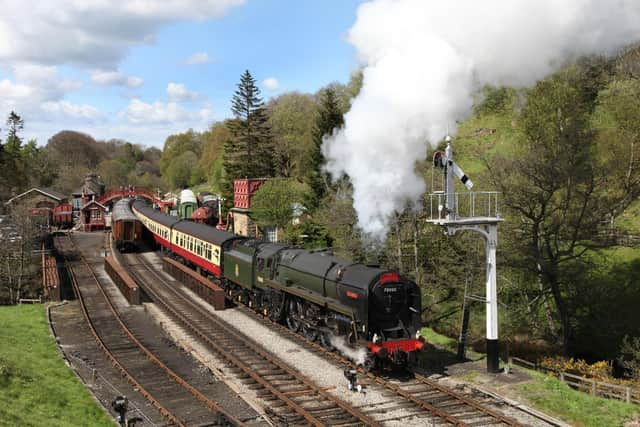North Yorkshire Moors Railway to open in February half-term for the first time with visit from locomotive that hauled King George VI's funeral train
Traditionally, the heritage line closes between autumn and Easter, with only brief opening for the Santa Special events at Christmas.
However, the railway has confirmed it has secured a guest locomotive which will visit Pickering during the school holidays.
Advertisement
Hide AdAdvertisement
Hide AdNo.7000 Britannia is the steam engine which hauled King George VI’s funeral train from Norfolk to London in 1952, after he died at the Sandringham estate – a journey which was recreated in the Netflix series The Crown. It was initially thought that his daughter Queen Elizabeth II’s coffin would be transported from Edinburgh by rail after her death at Balmoral, before the RAF flew her body back to London instead.


Britannia has been booked to work two return trips between Pickering and Grosmont every day between February 10 and 18, with departures at 11am and 2pm. The locomotive is often seen on the mainline hauling steam charter excursions, and is not often used on heritage lines, where speed limits are lower.
There will be children’s activities running alongside the journeys, including a fairytale-themed show at Pickering Station’s classroom. Signalbox working demonstrations will also take place.
Acting chief executive Laura Strangeway said: “We’re so excited to open a little earlier next year, for these incredible special services featuring the iconic Britannia. This is a fantastic opportunity for enthusiasts but also a great way for families to spend a half term day out together, on board our heritage railway.”
Advertisement
Hide AdAdvertisement
Hide AdBritannia, which is owned by a preservation trust, was only built for British Railways a year before she was assigned to the Royal Train after the King’s death. She had to have her roof painted white for the duty, and was likely chosen because her normal workings were on expresses between London and Norwich, as well as the ‘boat trains’ which met the ferries at Harwich. She was retired in 1966 and was initially destined for the National Railway Museum at York before they chose another of her class, Oliver Cromwell, for display instead.
